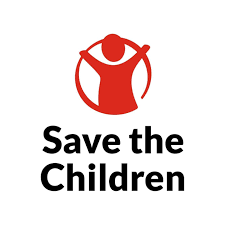
Save the Children believes every child deserves a future. In the United States and around the world, they do whatever it takes – every day and in times of crisis – so children can fulfill their rights to a healthy start in life, have the opportunity to learn, and be protected from harm. With over 100 years of expertise, Save the Children is the world’s first and leading independent children’s organization transforming lives and the future we share.
- Market segment: Nonprofit, iNGO
- Thematic Area: Health, Child Protection Services, Education, Food and Shelter
- Region: USA, Federated Model
- Project Type: One-team project implementation between Save the Children US, Salesforce Professional Services, and Vera Solutions
- Solution used: Salesforce Nonprofit Cloud, Salesforce Experience Cloud, Amp Impact
With Salesforce and Amp Impact, Save the Children US can
- Attract over 100 applications by launching three funding opportunities to date
- Standardize USP program hierarchy and indicator catalog
- Streamline their approval process
- Support their users by providing 17 quick reference guides
- Educate 200+ staff during 15 live training sessions upskilling system skills
- Deploy 15 state-based trainers using the train-the-trainer model
Goals
- Implement a new system to consolidate program data, identify the communities served, and determine how to better utilize partners for greater impact
- Leverage system functionality to support award management, boosting workflow productivity
- Optimize monitoring & evaluation by centralizing all data in one unified hub
Challenges
- Each M&E program team used separate manual tools for data collection, award management, and program implementation, causing delays in answering basic questions about partners, programs, and results by region
- Partners used multiple systems and formats (e.g. SCORE, Foundant, Partner Portal, and Surveys) to provide information with no standardization for data collection
Solutions
Impact Hub serves as a central source of data, for both internal and external use via a partner portal with:
- Salesforce Nonprofit Cloud for partner data, award management, and program management
- Salesforce Experience Cloud for the external partner portal with awards, applications, and reporting
- Amp Impact for monitoring & evaluation and impact reporting
Approach
- Conducted initial meetings to assess requirements
- Salesforce and Vera Solutions presented a prototype of NPC for Programs, Experience Cloud, and Amp Impact
- Employed a hybrid/agile approach with train-the-trainer sessions, quick reference guides, and a collaborative ‘one team’ style, all focused on improving children’s lives and driving adoption
The Benefits Today
- External portal simplifies grant applications with easy access via a custom URL
- Open funding opportunities are prepared and aligned with programs
- Impact Hub portal collects data for partner reports
High-Level User Capabilites
- Program teams manage grants to partners and supervise program implementation efficiently
- M&E teams evaluate programs, collect data, and provide impact insights across partners, programs, and regions
- Manage partner and contact data and provide impact insights across partners, programs and regions
- All users can review, manage, track applications, and convert them into funded projects
Next Steps
- Enhance the internal hub for the MERL team to verify partner data, and leverage reports and dashboards to showcase work and results
- Internal hub to provide stakeholders with insights into partner locations, program implementations, and individual program results, both by specific locations across the USA and aggregated nationally
Future Plans
- Case management to transfer attendance-based data from the legacy system to the central system, aiming to strengthen support capabilities
- Widen tech adoption to advance management and monitoring, with plans to build out an AWS Data Lake and enable complex reporting using Amp Impact and Tableau
Goals
- Implement a new system to consolidate program data, identify the communities served, and determine how to better utilize partners for greater impact
- Leverage system functionality to support award management, boosting workflow productivity
- Optimize monitoring & evaluation by centralizing all data in one unified hub
Challenges
- Each M&E program team used separate manual tools for data collection, award management, and program implementation, causing delays in answering basic questions about partners, programs, and results by region
- Partners used multiple systems and formats (e.g. SCORE, Foundant, Partner Portal, and Surveys) to provide information with no standardization for data collection
Solutions
Impact Hub serves as a central source of data, for both internal and external use via a partner portal with:
- Salesforce Nonprofit Cloud for partner data, award management, and program management
- Salesforce Experience Cloud for the external partner portal with awards, applications, and reporting
- Amp Impact for monitoring & evaluation and impact reporting
Approach
- Conducted initial meetings to assess requirements
- Salesforce and Vera Solutions presented a prototype of NPC for Programs, Experience Cloud, and Amp Impact
- Employed a hybrid/agile approach with train-the-trainer sessions, quick reference guides, and a collaborative ‘one team’ style, all focused on improving children’s lives and driving adoption
Benefits
- External portal simplifies grant applications with easy access via a custom URL
- Open funding opportunities are prepared and aligned with programs
- Impact Hub portal collects data for partner reports
High-level user capabilities
- Program teams manage grants to partners and supervise program implementation efficiently
- M&E teams evaluate programs, collect data, and provide impact insights across partners, programs, and regions
- Manage partner and contact data and provide impact insights across partners, programs and regions
- All users can review, manage, track applications, and convert them into funded projects
Next Steps
- Implement five impact indicators across all projects to measure outcomes
- Refine the user interface and train staff for optimal system operation and maintenance
- Instruct the team on creating visualizations to highlight community impact and enhance understanding of data use cases and value
Future Plans
- Update the system to align and support the goals and requirements for the next project phase
- Centralize project views with standardized indicators for consistent tracking and reporting of key metrics, including progress, outcomes, and performance, across teams

Brenda Miele
Head User Experience & Solution Architecture, SCUS
